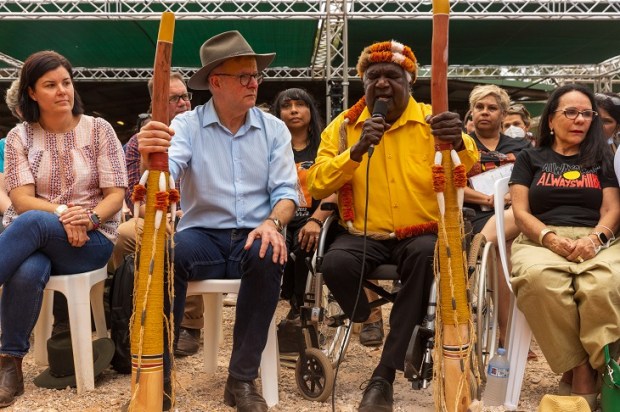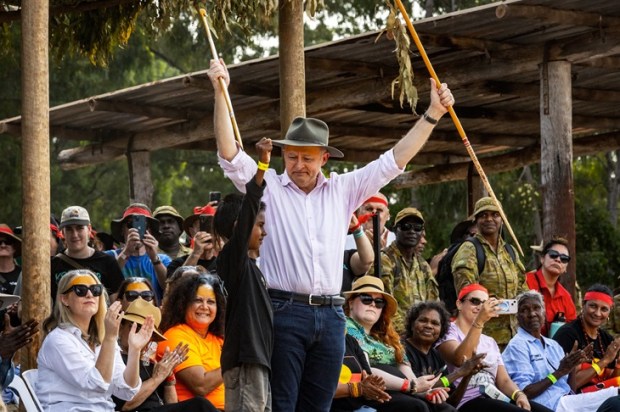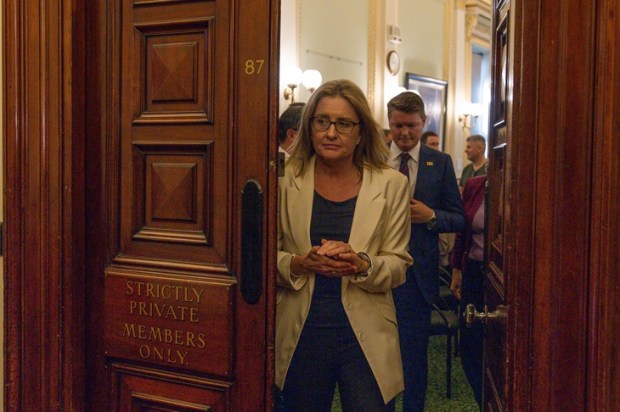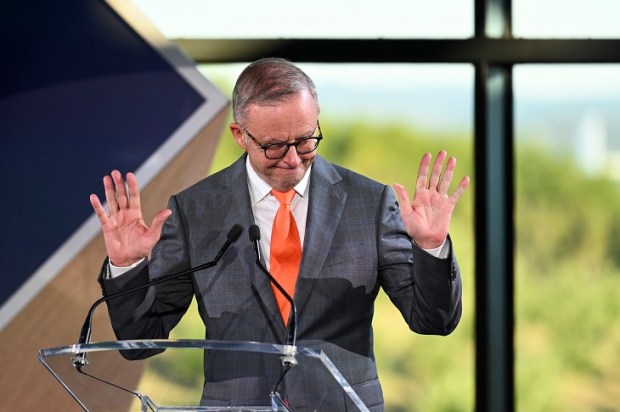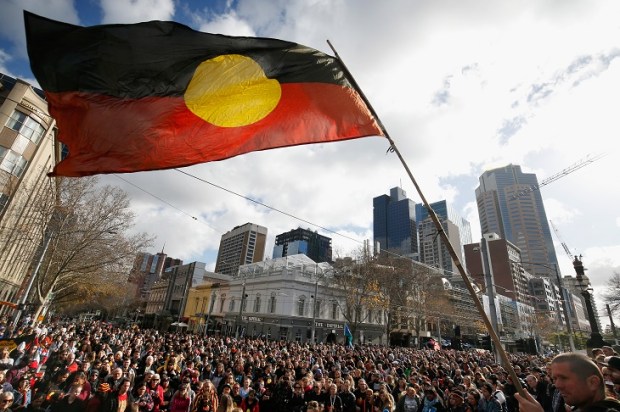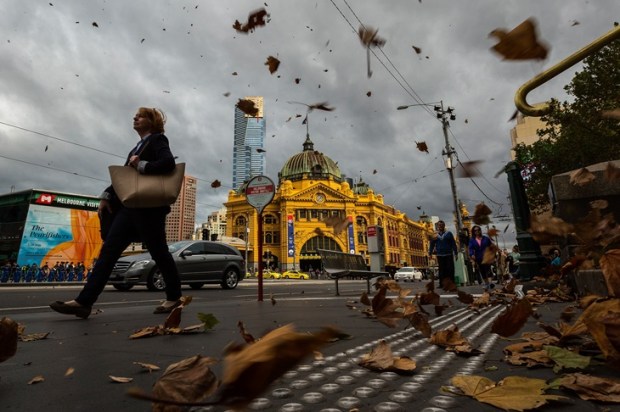Australia’s Voice Referendum resulted in the beautiful affirmation that our nation does not see colour or heritage among its peoples.
The Voice process exposed the brutality of life for some in remote Australia and the consortium of corporate, church, sporting, and political elites.
It also illuminated the pointy end of Indigenous politics in Australia as a commune of militants.
Indigenous activism and politics are neither new nor over.
The Indigenous political machinery has been whirring fluidly in Australia for years. Post-Voice, the question is whether the referendum failure will heighten the militant Indigenous efforts in other areas.
For example, we might expect the temporarily shelved and politically damaging Aboriginal Cultural Heritage Act in Western Australia to be revitalised.
In Victoria, the state with the lowest referendum ‘No’ vote at 55-45, Treaty is on its way pursued by the First People’s Assembly in Victoria, an unrepresentative Indigenous collection voted in by less than 7 per cent of able voters.
Victoria is also rolling out Recognition and Settlement Agreements, RSAs, which go well beyond Native Title, in fact replace Native Title where it exists.
As the sun rose on the Sunday after the referendum, the Victorian Premier Jacinta Allan and Minister for Treaty and First Peoples, Natalie Hutchins, issued a media statement that started like this: ‘We know that a lot of First Nations people will be hurting today.’
It completely ignored the fact that not all Indigenous Australians supported the Voice.
It was akin to the messaging within a media release distributed by the former Premier, Daniel Andrews, in the wake of the High Court’s 7-0 decision in relation to the Cardinal Pell matter. In the statement of 7 April 2020, Andrews addressed his message to victims and survivors of sexual assault: ‘I see you. I hear you. I believe you.’
Labor in Victoria has walked so deeply into the Woke woods that it cannot find a way out. And nor does it want to.
Indigenous activism is continuing elsewhere.
Australian courts have taken a fancy to Indigenous mythology. And it is here where a new frontier of activism is being forged.
All cultures and peoples have a mythology, a spirituality, and a faith. The Christian faith, for example, believes that in six days, God created the Earth and everything in it. He created man and woman.
Christians believe that God started it all. From nothing, something. They believe God is everywhere and in everything.
It goes to reason, then, that the Christian God, my God, created the Rainbow Serpent, the river serpents, the whale songs, Bunjil and so on. He not only created them, but he is in them. In the rivers. In the serpents. In the whales and in their songs.
To put it simply, one could argue that in the hierarchy of Gods, the Christian God is well placed.
If one were to follow that reasoning, that logic, or even that leap of faith, then surely my God could take precedent in any court of law accepting mythology as legal tender?
Surely without my God, my mythology, none of it is possible.
The Bible didn’t leave it to song lines or Dreamtime imaginings. It was put in writing.
And yet, it is upon an unwritten mythology, that some of Australia’s biggest energy and agricultural projects have been put in limbo, or simply rejected, in recent months.
Lore has usurped law. Fiction has replaced fact.
Take for instance Woodside Energy’s Scarborough natural gas project, Australia’s ‘biggest energy development’ worth $16 billion development. The Federal Court recently ruled the project invalid finding that insufficient consultation was done with Indigenous groups. With the legal backing of the federally funded Environmental Defenders Officer (EDO) Indigenous woman, Raelene Cooper, brought the legal action against Woodside.
Previously the chair of the Murujuga Aboriginal Corporation, Ms Cooper, took on Woodside in her capacity as a leader of the Save Our Songlines group. She argued the seismic impacts of the gas project would interrupt the whale songs in the ocean area.
‘There’s no way in any circumstance that they’re above our law, my Indigenous law, our cultural law that’s been here since the beginning of time,’ she said.
The Australian Indigenous argue they have been on this land for 65,000 years. Is Ms Cooper arguing that the beginning of time is 65,000 years ago?
A similar statement about the beginning of time is made in the Recognition and Settlement Agreement between the State of Victoria and the Barengi Gadjin Land Council Aboriginal Corporation. It is now up for negotiation with 10 local councils in the Agreement area. Within the Agreement is a request for sole water and crown land management, ‘equal footing’ with local councils, and preferential procurement and employment contracts.
It is an unprecedented Agreement in Victoria and, to that extent, Australia.
It is worth noting that in the referendum, this same Agreement area in Western Victoria voted nearly 79 per cent and 69 per cent ‘No’ to the Voice.
The Recognition Statement within the Agreement starts by saying that the ‘Wotjobaluk, Jaadwa, Jadawadjali, Wergaia and Jupagulk Peoples have lived in the Wimmera since the beginning of time.’
The beginning of time is therefore, at best, 65,000 years ago. The WJJWJ people also argue a ‘special relationship’ with the Wimmera River. We await to see where that argument is heading.
The mythology argument is made elsewhere.
In northern Australia, it involves turtles and a dreaming track. The Santos offshore gas drilling project in waters near Darwin includes a pipeline from the Barossa gas field in the Timor Sea to an existing LNG facility on Darwin Harbour. The project is worth $5.6 billion.
It was halted last year by the Federal Court when it was successfully argued (again by the Environmental Defenders Office) that an Indigenous community 250 kilometres from Darwin had not been properly consulted.
Larrakia man Kevin Lance Quall also argued that the ‘planned route for the pipeline also cuts through the Darramarrangamanidj creator’s dreaming track, an important site for the Larrakia people’.
After undergoing a new round of consultation and re-submitting its plans to the regulator in July 2023, Santos is now facing further, and similar, legal challenges over their second-effort consultation. In a new legal challenge Croker Island traditional owner Isabelle Lami Lami said the project threatens sacred sites.
‘We also have our rainbow serpent, who protects us and our community – she cannot be disrupted or disturbed or harmed in any way… We live off the sea,’ she said.
In Western Australia’s Pilbara, it was a sacred river and a river serpent, Warnamankura, that put end to Twiggy Forrest’s plans to secure water supply for a cattle project on pastoral property.
His company, Harvest Road, wanted to build nine weirs along the Ashburton River, 1,400 kilometres north of Perth. It is also known as Mindurru. Mr Forrest had argued that the weirs had been trialled and worked to ‘improve freshwater access for both agriculture and the local ecosystem’.
But the native title group Buurabalayji Thalanyji Aboriginal Corporation won the argument with the Western Australian State Administrative Tribunal in April 2023. It said the ‘Thalanyji people have been custodians of the river for over 60,000 years.’
They argued the project would ‘disturb the water serpent’ and that ‘changes to the river … might make Warnamankura angry’. The Tribunal took evidence that the river has healing powers.
None of this is to argue against or question the vital need for proper and rigorous environmental standards being applied to any project. They should be. They must be.
The question is simply this: Is only one God or mythology allowed to go to court?
Can my God go to court too?
If major nationally, indeed globally, significant projects are at the whim of Aboriginal lore, it illuminates that the courts are accepting of mythology over facts and figures.
They have opened the door to myth and spirituality being legally acceptable.
In that paradigm, shouldn’t the courts therefore be open to assessing all mythologies and faiths?
It’s not a cute question, or one of malicious intent. It is a very simple question.
If the Christian belief is one that God created the Earth and all that is in it – then surely that spirituality is also relevant within the legal context unfolding in Australia?
If God created the River Serpent, and is in the River Serpent, then why isn’t that spirituality, that mythology, also relevant before the judges?
Maybe Mr Forrest just needs to go back to the courts and say, hey, my God created their serpent and my God loves this project. My God wants this project to proceed because on Day 6 of His Creation – which goes to the beginning of time – he gave Adam and Eve ‘every creature and the whole earth to rule over, care for, and cultivate’.
Cultivate.
That’s what Twiggy wants to do with his cattle – and that’s apparently what God wants him to do too.
The law of lore just got very interesting.
Especially equality before the law. Or is that lore before equality?
The Voice has spoken, but will the courts listen?


